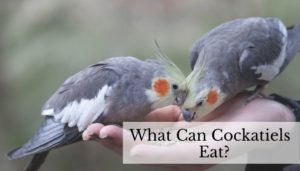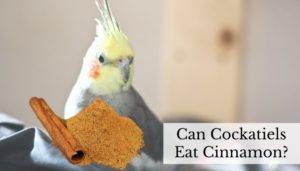Adopting a bird, especially a cockatiel, can be quite the challenge. While cockatiels make for great pets thanks to their beautiful colors, chatty (and chirpy attitude), and bright personality, bird-keeping also comes with its own set of problems, most of which you may not be familiar with. This includes surprising behavior like beak-grinding, head bobbing, and molting.
But what is molting?
Simply put, molting is the process of a bird shedding its old feathers to grow new and healthier ones. While molting is normal, it can also happen for various reasons, such as stress, destructive behavior, preening, and even sickness/infections. In such cases, knowing what’s behind your pet bird’s molting can make a difference in how you care for it.
If you wish to learn more about this process, then this article will go over everything you need to know about cockatiel molting, including what it looks like, why it happens, and what you can do for your bird when it happens.
What is Molting?
Molting is the process that a bird goes through to replace its old feathers with new ones. Depending on the bird, a molt may be partial or complete. Because of this, molting time dramatically varies and can last for as little as a week to even several years.
Furthermore, how many times a bird molts also depends on the species, as some birds only molt once a year, while some molt a few times.
Whatever the species is, a bird’s molting process starts in its feathers. Bird feathers are composed of keratin (much like our hair and nails), and thus, they are always subject to damage and stress from several things. For birds, this means rubbing against something, flying, dust bathing, or just about anything that causes friction.
As the damage accumulates, the properties of each feather get compromised, leading to the molting process that we can observe today. Generally, birds go through different types of molting, including:
- Juvenile to adult – Young birds molt once they reach adulthood to develop new coloration.
- Breeding to non-breeding – Many bird species molt from a bright plumage to muted colors after breeding.
- Non-breeding to breeding – Likewise, birds that are breeding molt to a more colorful plumage to attract mates.
- General feather replacement – This is when a bird molts to replace damaged or old feathers.
What Does A Molting Cockatiel Look Like?
Much like any bird, cockatiels also molt. In fact, cockatiels go through heavy molting at least twice a year, so don’t be alarmed if you see your pet lose a lot of feathers.
As for what a molting cockatiel looks like, it should be easy to identify by the number of feathers you see in your pet’s cage. During this time, you should also find tiny transparent flakes that resemble dandruff being shed as well.
These flakes are part of the keratin that protects all new feathers, so they fall off as soon as the new feather stops receiving blood and begins to shoot outside.
As for the color, it all depends on how old your cockatiel is. Juvenile cockatiels will slowly molt into brighter colors. Male adults molt into brighter colors, while females tend to molt into lighter plumage.
Additionally, molting cockatiels tend to go through mood changes, such as irritability and being more puckish than usual. Molting cockatiels also tend to sleep more.
Additional reading: Why is My Cockatiel Grinding Its Beak? All You Need To Know
How Long do Cockatiels Molt?
Generally, a cockatiel’s first molt occurs between 6-12 months of age and takes several weeks to complete. And once a cockatiel reaches adulthood, molting can take up to 10 weeks or longer. Additionally, healthy cockatiels also molt at least 2-3 times per year.
It’s also important to note that while it’s not always noticeable, cockatiels are continuously molting throughout the year. The birds then go through more heavy molting when it’s needed.
What Are The Reasons Behind Cockatiel Molting?
As mentioned above, there are several reasons behind bird molting, and your cockatiel is no different.
For example, your cockatiel will molt into brighter colors once it reaches breeding season, especially if it lives with a mate, and will molt back into its normal color once that period is done.
Cockatiels also molt through different stages of their lives and when their feathers need a general replacement.
Unfortunately, cockatiels can also go through abnormal molting, usually because of stress, poor diet, or inadequate living conditions. Your bird might go through destructive feather plucking in such cases, and immediate vet interference is recommended.
Is it Painful for Cockatiels to Molt?
In general, molting is a stressful process for the bird. Subsequently, it also takes a lot of energy, so molting birds often sleep or are less active in general. Your bird may even be more puckish or irritable than usual.
However, the process of losing feathers isn’t painful. It can be uncomfortable, yes, but molting itself is not physically painful, so there’s no need to be alarmed.
What to Do When Your Cockatiel is Molting
Seeing your bird molting may leave you worried or concerned. Luckily, you can do plenty of things to make life more accommodating and easier for your molting bird. Here’s a list of what you can do:
Temperature Changes
Cockatiels hate temperature changes in general, but even more so while molting. So during this period, try to make their home more comfortable by keeping the temperature between 75 and 80 degrees Fahrenheit.
Promote Preening
If your bird isn’t showing signs of aggressive behavior, you can give them small scratches on the head and beak. Molting will make your bird feel itchy all the time, so doing this will help provide relief, all while building trust between you and your pet.
Emphasize Safety and Security
To do this, make sure that the environment around them is always quiet and peaceful. It’s also not a good idea to have cats around that will bother your pet. Remember that your pet is more vulnerable to disease around this time, so make sure everything is always peaceful.
Other things you can do include serving your bird protein and calcium, giving it a mist bath or shower, and not disturbing it while sleeping.
What to feed your cockatiel when molting
As far as diet goes, feeding your cockatiel food rich in protein and calcium will help your bird stay healthy during molting. Protein, in general, will provide them with the energy they need, while calcium helps promote healthier and more colorful feathers.
Give fresh quality pellets, a calcium block, water as well as fresh veg and fruits. You can also encourage your pet bird to eat well via treats like millet sprays.
Additional reading: List of What Cockatiels Can Eat
Final Thoughts
While molting can look bothersome and scary, it’s essential to understand that it’s a normal process that every bird goes through, and that includes your pet.
And provided that your pet bird’s living conditions are in excellent order and they are fed a varied diet, there should be no need to worry when you start seeing feathers everywhere in its cage.
But if you’re still inclined to go above and beyond for your pet, then allowing them to rest more, providing them with protein-rich food, and giving mist baths to encourage cleaning will make all the difference.




I have learned a lot from your website thank you for the tips.